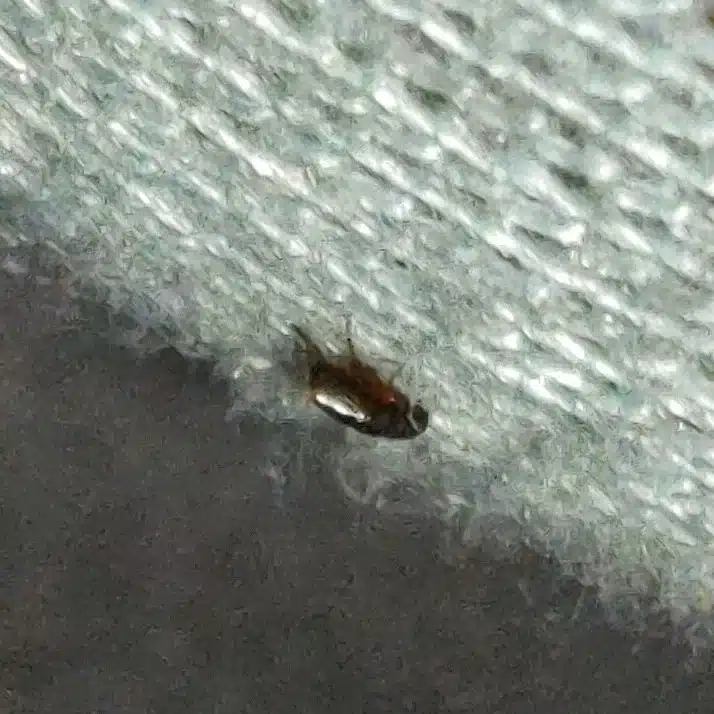Finding fleas in your carpet can feel overwhelming, but understanding how to get fleas out of carpet makes the process much more manageable. After dealing with countless flea infestations across the DMV area over the past four years, I’ve learned that carpets create the perfect environment for these pests to thrive.
Critical Fact
Most homeowners don’t realize that 90-95% of the flea population actually lives off your pet. The eggs, larvae, and pupae are hiding deep in your carpet fibers, not on your dog or cat. When adult fleas feed on pets, their eggs roll off within hours and settle into the cozy spaces between carpet threads.
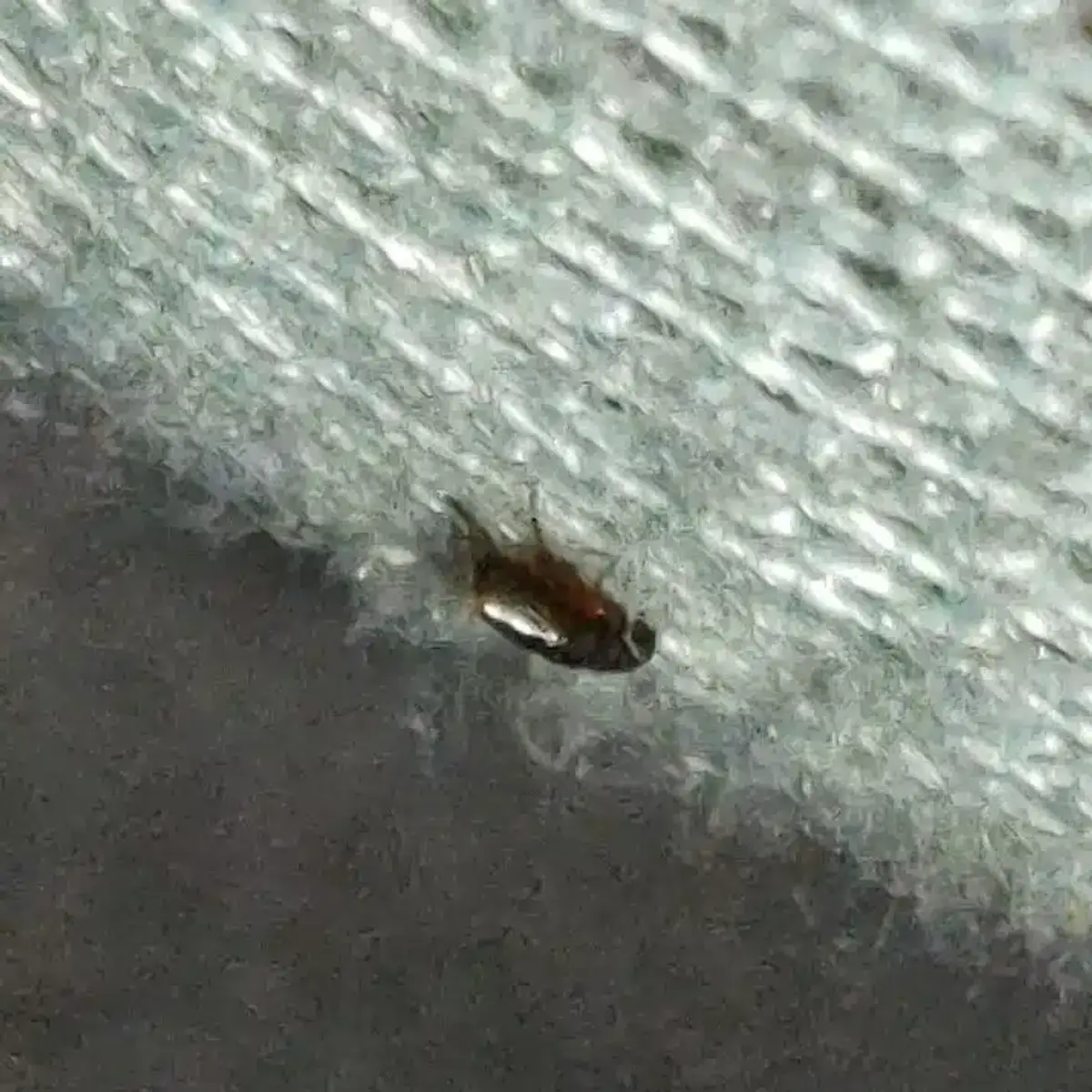
The good news is that with the right approach, you can eliminate fleas from your carpet completely. This guide walks you through proven methods that have worked in hundreds of homes throughout Virginia, Maryland, and DC.
Why Carpets Become Flea Infestation Hot Spots
Carpets provide everything fleas need to complete their life cycle. The fibers create shade and maintain humidity levels that flea larvae love. Additionally, organic debris like pet dander and dried blood (called “flea dirt”) gets trapped in carpet, giving larvae plenty to eat.
From my experience treating homes in Alexandria and Bethesda, I’ve noticed that certain carpeted areas become particularly problematic. Pet sleeping areas, spaces under furniture, and rooms with less foot traffic tend to harbor the highest flea populations.
Understanding flea biology helps explain why carpets are so attractive to these pests. Research shows that eggs hatch in just 2-3 days under ideal conditions, with larvae going through three molts before becoming pupae that can remain dormant for months.
What does the science say?
According to the University of Kentucky’s entomology department, flea eggs hatch in just 2-3 days under ideal carpet conditions (70-85°F and 70-85% humidity). The larvae then go through three distinct molts over 5-11 days before pupating. Pupae can remain dormant in carpet fibers for weeks or even months, emerging only when they detect vibrations, heat, or carbon dioxide from potential hosts walking nearby.
Step 1: Confirm and Map Your Flea Problem
Before learning how to get fleas out of carpet, you need to confirm where they’re hiding. Start with the white sock test - walk around your carpeted areas wearing white socks and check for dark specks or jumping fleas.
Focus your inspection on areas where pets spend time. Look under pet beds, around sofas, and along walls where your dog or cat likes to rest. Flea larvae avoid bright, high-traffic areas, so check darker corners and spaces under furniture.
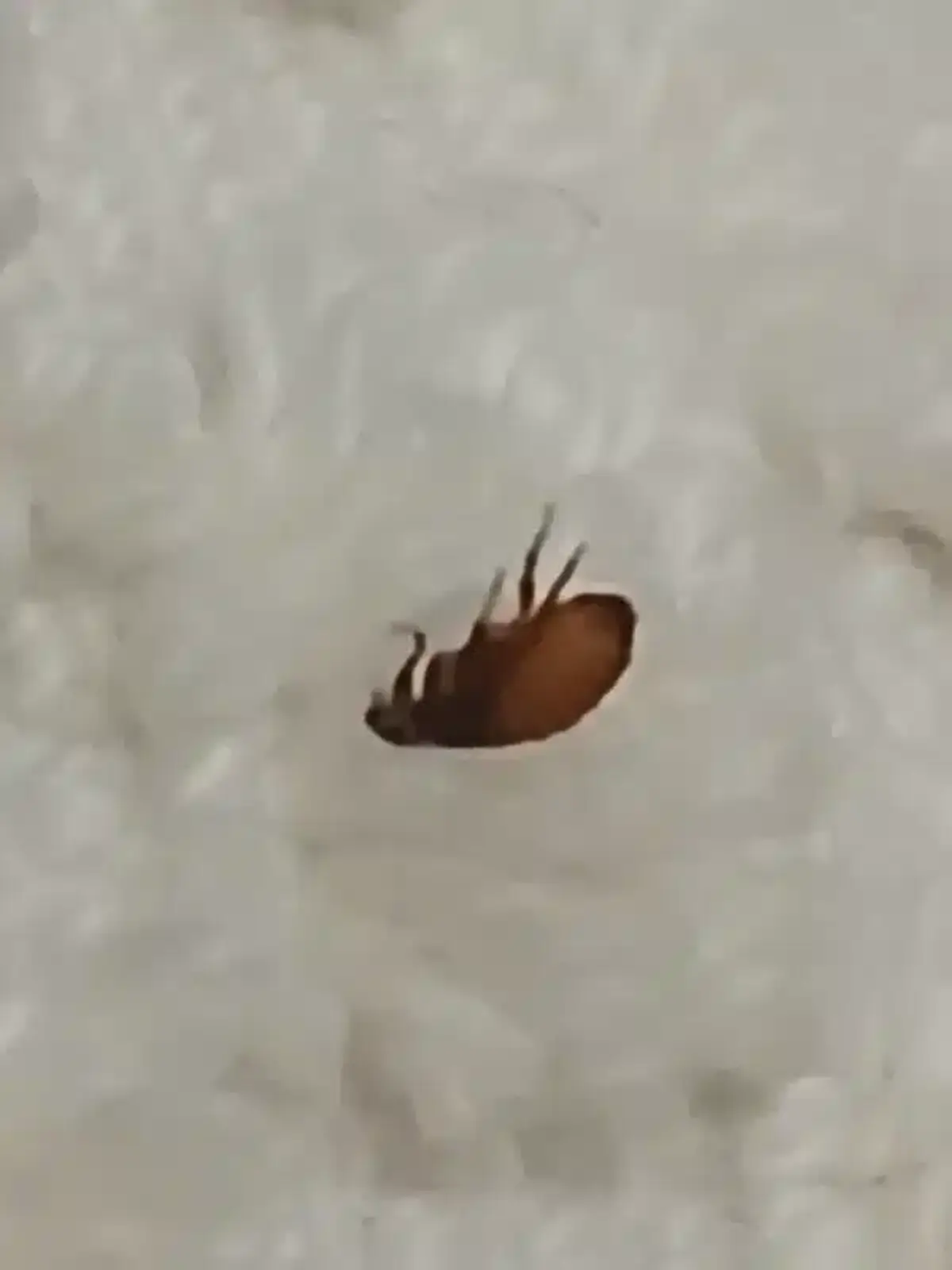
Use a fine-tooth flea comb on your pet’s rump and neck area to gauge the severity of the infestation. If you find live fleas or black specks (flea dirt) on your pet, there are definitely more hiding in your carpet.
Step 2: Prepare Your Home for Treatment
Proper preparation makes all the difference when getting fleas out of carpet. Start by washing all pet bedding and family linens in hot, soapy water. The EPA recommends using the hottest water setting and drying on high heat to kill all flea stages.
Remove clutter from floors and move furniture away from walls. This exposes the “dead air” zones where flea larvae accumulate. Pay special attention to areas under beds, couches, and other heavy furniture that doesn’t get moved often.
Don’t forget about outdoor preparation either. Mow your lawn short and remove leaf litter from around your home’s foundation. This reduces outdoor flea sources before you focus on indoor carpet treatment.
Step 3: Master Flea Control Vacuuming Techniques
Vacuuming is your most powerful tool for learning how to get fleas out of carpet effectively. Use an upright or canister vacuum with a motorized beater-bar - suction alone won’t remove as many eggs and larvae from deep within carpet fibers.
Powerful Technique
Daily vacuuming during the first two weeks removes 30-35% of flea larvae and eggs with each pass. Even better, the vibrations from vacuuming stimulate pupae to emerge as adults, making them easier to eliminate with follow-up treatments.
Focus on source points during each vacuuming session:
- Under pet beds and favorite sleeping spots
- Along baseboards and wall edges
- Under sofas and chairs
- Around heating vents and radiators
- In corners and low-traffic areas
Many homeowners worry about fleas surviving inside the vacuum bag, but research confirms that vacuuming effectively kills these pests. While emptying the bag isn’t necessary for flea control, it’s still good hygiene practice.
What does the science say?
Research from Ohio State University demonstrates that 96% of adult fleas die inside a standard vacuum cleaner. The study found that fleas are killed by the physical trauma of being sucked through the vacuum’s spinning brush and debris-filled chamber, not by suffocation. This means you don’t need to worry about adding insecticide powders to vacuum bags or immediately disposing of them after use.
Step 4: Choose Your Get Rid of Fleas Carpet Treatment Method
Once you’ve established a solid vacuuming routine, it’s time to select the best treatment approach for getting fleas out of your carpet. The method you choose depends on your family’s needs, the severity of the infestation, and your comfort level with different products.
Steam Cleaning for Immediate Results
Steam cleaning kills all flea stages on contact when the temperature reaches 120°F or higher. This method works particularly well for families with young children or anyone concerned about chemical treatments in their home.
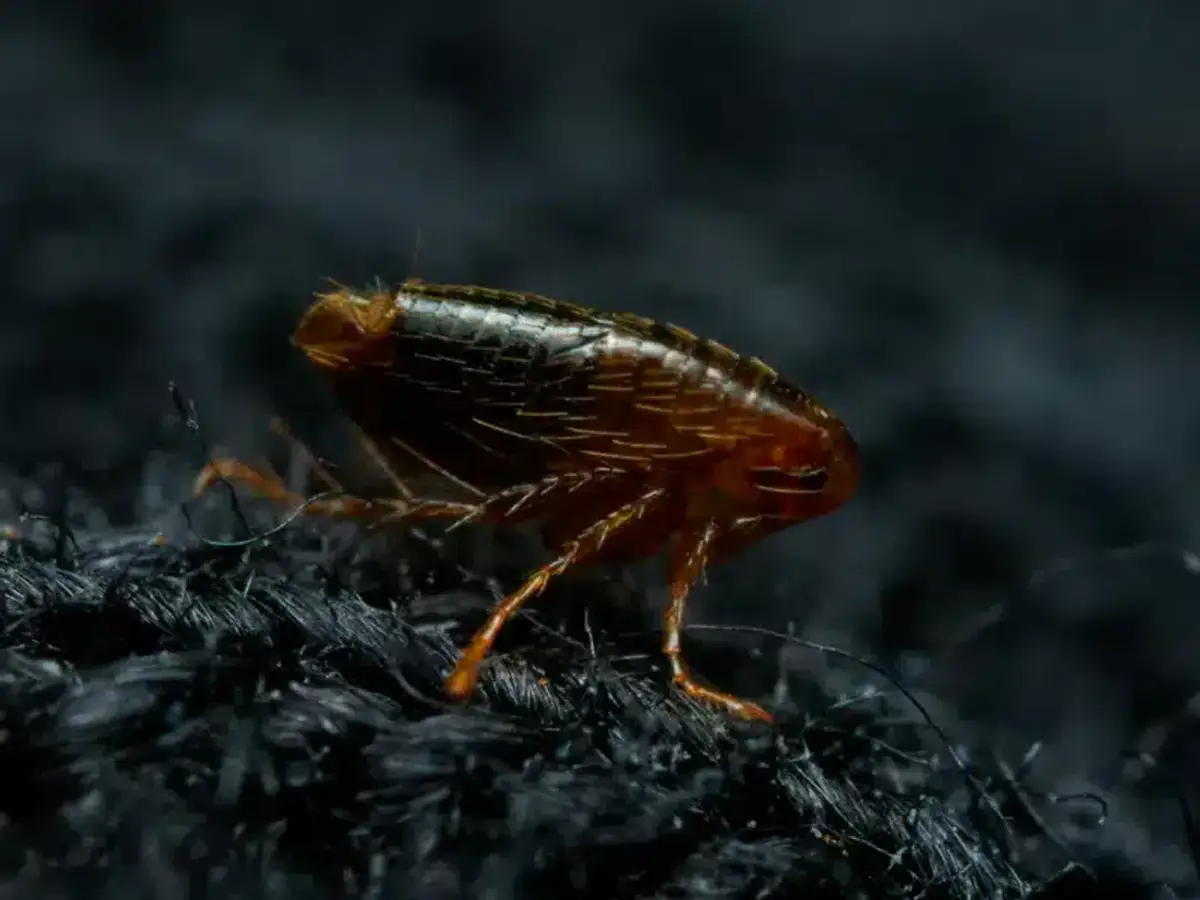
The key to successful steam cleaning is timing. Always steam your carpets before applying any chemical treatments, not after. Steam dramatically reduces the effectiveness of residual insecticides, so proper sequencing is essential.
Keep in mind that steam cleaning has limitations. It won’t reach pupae that are cocooned deep in carpet pile, and new fleas from your pet can re-seed treated areas quickly.
Chemical Treatment Options
For more persistent flea problems, chemical treatments offer longer-lasting control. The most effective products contain Insect Growth Regulators (IGRs) like methoprene or pyriproxyfen, which disrupt the flea life cycle.
University of Minnesota Extension research shows that IGRs can reduce flea emergence by over 80% for up to seven months. When adult flea populations are high, combining an IGR with a short-residual adulticide provides both immediate knockdown and long-term control.
Our family business has spent considerable time researching which products meet our standards for use in customers’ homes. We’ve removed nine harsh chemicals commonly used in the industry, choosing alternatives that are effective while being more considerate of families and pets.
Natural Treatment Alternatives
Borate-based carpet powders work by targeting flea larvae through ingestion. These products have low toxicity to mammals but can dull carpet fibers if over-applied. Work the powder deep into carpet pile and vacuum thoroughly after 24 hours.
Citrus oil sprays containing d-limonene or linalool provide immediate knockdown but offer less than 24 hours of residual control. These botanical options require more frequent applications but appeal to homeowners seeking natural approaches.
Flea Treatment Method Comparison
| Steam Cleaning | Chemical Treatment | |
|---|---|---|
| Speed of Results | Immediate kill on contact | 24-48 hours |
| Residual Control | None | Up to 7 months |
| Best For | Chemical-free households | Long-term prevention |
Step 5: Perfect Your Treatment Timing
The sequence of treatments determines how successfully you get fleas out of carpet. Follow this proven timeline that I’ve used in hundreds of homes across the DMV area:
- Deep vacuum all carpeted areas
- Steam clean if desired (allow complete drying)
- Apply IGR and adulticide treatments
- Resume daily vacuuming after 24 hours
- Continue vacuuming every 2-3 days for two weeks
This approach maximizes both physical and chemical control methods. The initial vacuuming removes many fleas, steam kills remaining stages, and chemical treatments prevent new generations from developing.
Case Study: When Perfect Timing Made All the Difference
Last summer, I treated a home in Alexandria where the family had been struggling with carpet fleas for over two months. They’d tried multiple DIY approaches but kept seeing new fleas emerge every few days, creating endless frustration.
- Initial mistake: They were steam cleaning AFTER applying chemical treatments, destroying the residual protection
- Timing issue: They treated carpets but waited a week to treat their three cats
- Our approach: Coordinated pet treatment, proper sequencing, and daily vacuuming schedule
- Result: Complete elimination within 4 weeks following our proven timeline
This case reinforced why timing and sequencing are so critical - even the best products fail when applied in the wrong order or without addressing all sources simultaneously.
When to Call Professional Pest Control Help
Sometimes learning how to get fleas out of carpet on your own isn’t enough. Large infestations, repeated DIY failures, or physical limitations that prevent thorough cleaning are all good reasons to contact a licensed professional.
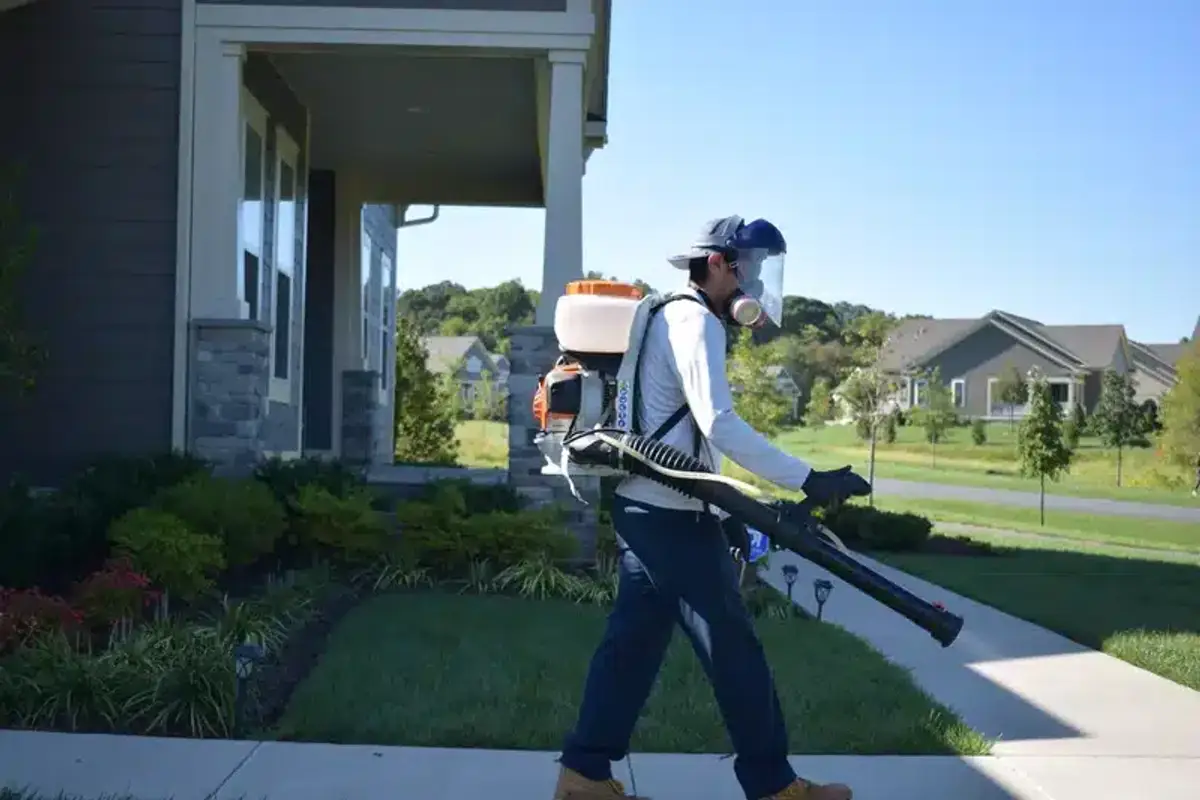
In Virginia, Maryland, and DC, any paid applicator using restricted-use pesticides must hold current Commercial Pesticide Applicator certification. Always verify licensing with your state agriculture department before hiring any service.
Professional treatment typically includes a detailed inspection, customized treatment plan, and follow-up visits. Understanding the investment involved helps you make informed decisions about DIY versus professional approaches.
Our registered technicians bring over 300 years of combined experience to every flea treatment. We focus on integrated approaches that address the root cause while providing immediate relief.
Preventing Flea Re-infestation in Carpets
Successfully getting fleas out of carpet is only half the battle. Preventing re-infestation requires ongoing attention to your pets, home environment, and outdoor areas.
Treat all pets simultaneously with veterinarian-approved products. The American Veterinary Medical Association emphasizes following weight-based dosing and species-specific label instructions.
Maintain weekly vacuuming and wash pet bedding every two weeks, even after fleas appear gone. Pupae can continue emerging for 4-6 weeks after initial treatment, so consistency is key.
Outdoor prevention focuses on eliminating flea-friendly conditions. Keep grass short (under 2 inches), remove damp leaf litter, and restrict wildlife access under decks and porches.
Essential Flea Prevention Steps
- Pet Treatment: Treat all pets simultaneously with veterinarian-approved products every month
- Regular Vacuuming: Continue weekly vacuuming of carpets even after fleas appear gone
- Bedding Maintenance: Wash pet bedding every two weeks in hot water and dry on high heat
- Outdoor Control: Keep grass short, remove debris, and treat outdoor areas where pets spend time
- Professional Monitoring: Schedule annual inspections to catch new infestations early
Regional Considerations for the DMV Area
Living in Virginia, Maryland, or DC means dealing with specific seasonal patterns that affect how to get fleas out of carpet. Our humid summers create ideal conditions for rapid flea development, with life cycles completing in just 21-24 days from June through October.
Carpets in air-conditioned basements remain at risk year-round because they maintain the temperature and humidity levels fleas prefer. This is especially common in older homes throughout Alexandria, Bethesda, and other established neighborhoods.

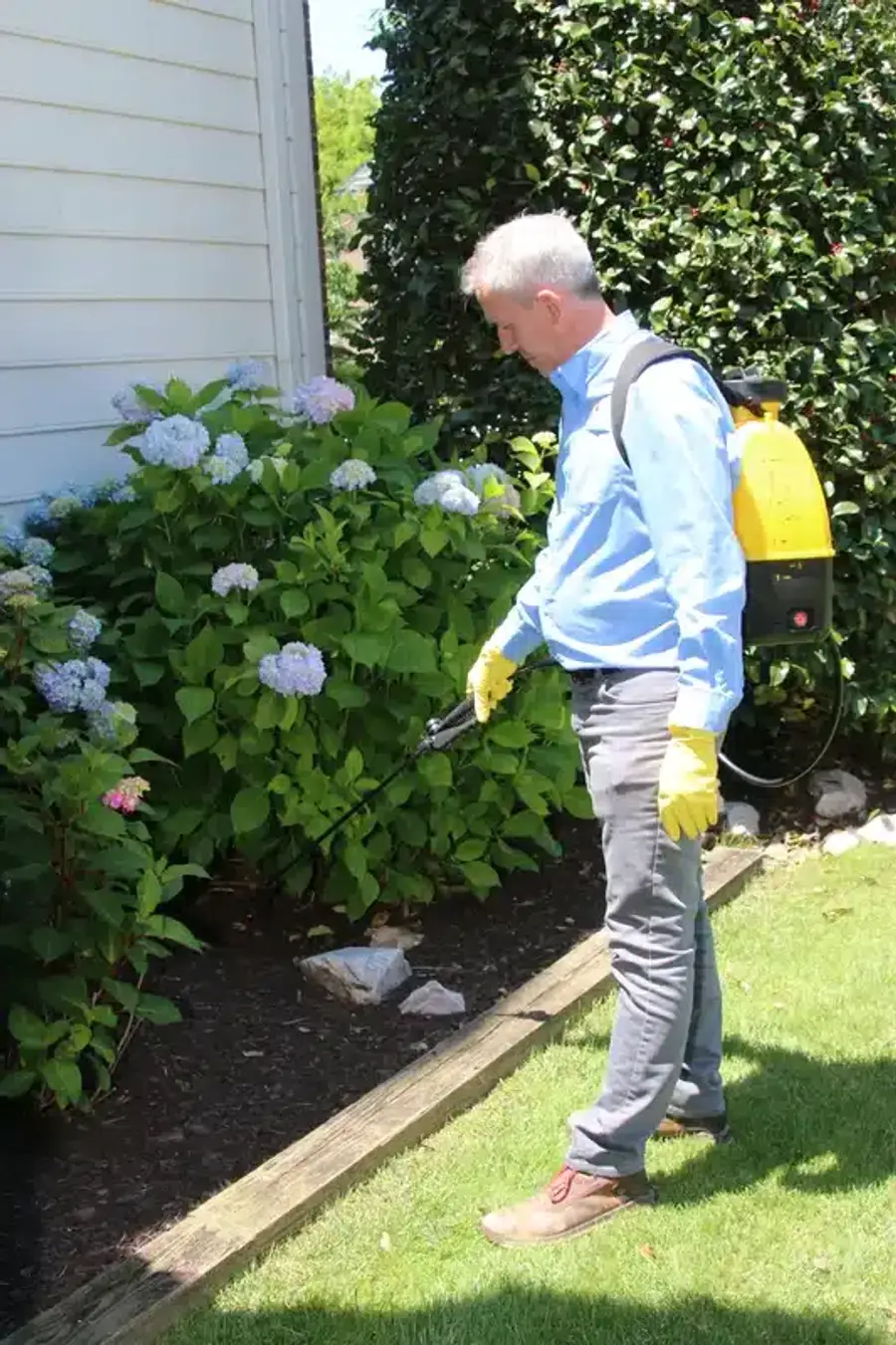
Local regulations also impact treatment choices. DC classifies any over-the-counter pesticide applied for hire as a restricted-use event, so homeowners should verify proper certification when hiring services across state lines.
Common Mistakes to Avoid
After treating numerous flea infestations throughout the region, I’ve seen several mistakes that prevent successful carpet treatment. Understanding these common errors saves time and frustration.
Many homeowners rely too heavily on total-release foggers without addressing the root problem. These products deliver poor coverage unless they contain IGRs, and over-use often leads to resistance issues.
Another frequent mistake is treating carpets without simultaneously addressing pets. No amount of carpet treatment will work if fleas continue reinfesting from untreated animals.
Stopping treatment too early is equally problematic. Even when you don’t see adult fleas for several days, pupae may still be developing in your carpet. Continue monitoring and light vacuuming for at least a month after apparent elimination.
Getting fleas out of carpet requires patience, consistency, and the right combination of methods. Whether you choose DIY approaches or professional treatment, success depends on addressing all aspects of the flea life cycle while preventing re-infestation.
Remember that every situation is unique. What works in one home might need adjustment for another, depending on carpet type, pet behavior, and infestation severity. The key is staying persistent and adjusting your approach based on results.
If you’re struggling with fleas in your carpet or want expert guidance on the best treatment approach for your specific situation, our experienced team is here to help.
Frequently Asked Questions
How long does it take to get fleas out of carpet completely?
+
Complete flea elimination from carpet typically takes 4-6 weeks with consistent treatment. This timeframe accounts for the flea life cycle, as pupae can continue emerging for several weeks after initial treatment. Daily vacuuming for the first two weeks, combined with appropriate chemical or steam treatments, speeds up the process significantly.
Can I use a regular vacuum to remove fleas from carpet?
+
Yes, but an upright or canister vacuum with a motorized beater-bar works much better than suction alone. The rotating brush helps dislodge eggs and larvae from deep within carpet fibers. Research shows that 96% of fleas die inside the vacuum, so you don't need to worry about them escaping or surviving in the bag.
Should I steam clean before or after applying flea treatments?
+
Always steam clean before applying chemical treatments, not after. While steam at 120°F or higher kills all flea stages on contact, it also eliminates the residual effectiveness of insecticides. The best sequence is: vacuum thoroughly, steam clean, allow complete drying, then apply IGR and adulticide products.
What's the difference between treating fleas and other carpet pests?
+
Flea treatment focuses on the complete life cycle, including eggs and larvae that other carpet pests like [carpet beetles](/signs-of-carpet-beetles-2/) don't share. Fleas require more frequent vacuuming and longer treatment periods because pupae can remain dormant for months. The approach differs significantly from treating [bed bugs or other biting pests](/bed-bug-vs-flea/).
Do I need to treat my pets at the same time as my carpet?
+
Absolutely. Treating carpet without addressing pets is like trying to empty a bathtub with the faucet still running. Adult fleas will continue laying eggs on your pets, which then fall into the carpet. All pets in the household need simultaneous treatment with veterinarian-approved products for successful flea elimination.
Are natural methods effective for getting fleas out of carpet?
+
Natural methods like borate powders and citrus oil sprays can be effective but typically require more frequent applications and longer treatment periods. Borate works well on larvae through ingestion, while citrus oils provide immediate knockdown but less than 24 hours of residual control. These methods work best when combined with thorough vacuuming and pet treatment.
How often should I vacuum during flea treatment?
+
Vacuum daily for the first 14 days, then every 2-3 days for the following two weeks. Each vacuuming session removes 30-35% of flea larvae and eggs while stimulating pupae to emerge. Focus on areas where pets rest, along baseboards, and under furniture where flea populations concentrate.
When should I call a professional for carpet flea treatment?
+
Consider professional help for large multi-room infestations, repeated DIY failures, or when physical limitations prevent thorough cleaning. [Professional treatment costs](/how-much-does-pest-control-cost/) are often justified when dealing with severe infestations that require specialized equipment and restricted-use pesticides. Licensed technicians also provide warranties and follow-up services.
Can fleas survive in carpet without pets in the house?
+
Adult fleas can survive in carpet for several weeks without a host, but they cannot complete their life cycle without blood meals. However, pupae can remain dormant in carpet for months, emerging when they detect vibrations, heat, or carbon dioxide from new hosts. This is why [thorough elimination](/can-fleas-live-in-human-hair/) is essential even in temporarily pet-free homes.
What's the best time of year to treat carpets for fleas in the DMV area?
+
Peak flea season in Virginia, Maryland, and DC runs from June through October when humidity exceeds 70% and accelerates the life cycle to 21-24 days. However, carpets in climate-controlled homes remain at risk year-round. [Preventive treatments](/how-often-should-you-spray-for-bugs/) before peak season can reduce the severity of summer infestations significantly.
With five years of hands-on experience in the pest control industry, George Schulz is a registered technician with the Virginia Pest Management Association and a proud third-generation professional in a family business that's been protecting homes for over 57 years. He manages and trains a team of service pros while also leading internal research efforts—recently spearheading a deep-dive review of thousands of documents on pest control materials to hand-pick the most kid and pet friendly, most effective solutions tailored specifically for homes in the DC metro area.
